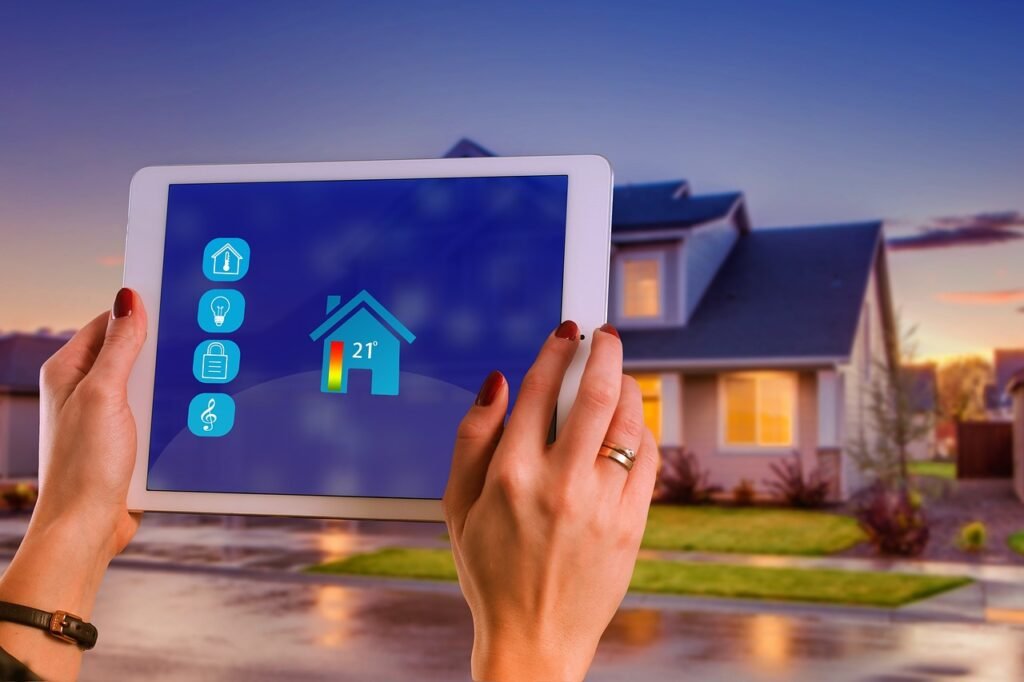Smart home technology is evolving rapidly, changing the way we interact with our living spaces. Imagine a home where every device — from your refrigerator to your thermostat — communicates to enhance convenience, safety, and energy savings. “Exploring The Future of Smart Home Technology” is an adventure that might not end.
In recent years, smart homes have become a reality, with innovations that cater to everyday needs. This article will explore these advancements, potential challenges, and how they could shape our future living spaces.
Current Innovations in Smart Homes
In recent years, we’ve witnessed remarkable growth in smart home technologies. The leap from basic automation to fully integrated ecosystems has made daily life more convenient. A major breakthrough has been the rise of smart speakers and voice assistants like Amazon Alexa, Google Assistant, and Apple Siri. These devices serve as control hubs, allowing users to manage everything from lighting to security cameras with just their voice.

Image source: pixabay
Smart lighting
Another major innovation is smart lighting. Devices from companies like Philips and LIFX allow users to adjust lighting color, brightness, and schedules via smartphone apps or voice commands. This makes it easier to reduce energy consumption by turning off unused lights remotely.
Smart thermostats
Smart thermostats like the Nest Learning Thermostat and Ecobee have also revolutionized climate control. These devices learn user preferences over time and adjust heating or cooling based on occupancy. This reduces energy consumption while maintaining comfort by automatically learning temperature patterns.

Image source: pixabay
Smart security systems
Smart security systems have advanced, providing real-time property monitoring. Brands like Ring and Arlo offer smart cameras that allow users to see who’s at their door, monitor their property, or communicate with visitors from anywhere in the world. This provides peace of mind and helps deter potential intruders.
Internet of Things (IoT)
The rise of the Internet of Things (IoT) has also brought new innovations. Next-generation smart appliances, such as refrigerators that track inventory and suggest recipes or remote-controlled washing machines, are becoming more common. These devices communicate with each other to create a seamless, interconnected home environment.
Challenges in Smart Home Adoption
Despite these advancements, there are still challenges to overcome before smart homes can be adopted by the mass market. One significant concern is privacy and security. As devices like smartwatches and home security cameras collect more personal data, questions arise about how this information is protected. High-profile data breaches have made consumers wary of trusting these devices with their sensitive information.
Another challenge is device interoperability. With numerous companies developing smart devices, there isn’t always a standard protocol for them to communicate seamlessly. For instance, smart lights from one brand may not work smoothly with smart speakers from another, leading to compatibility issues.
Moreover, cost remains a barrier for many consumers. Although prices have dropped in recent years, high-quality smart devices are still expensive. The upfront investment and potential installation costs can deter consumers. For smart home technology to become mainstream, it needs to become more affordable and user-friendly.
Lastly, as smart homes become more advanced, they can also become overly complex. While these systems aim to simplify life, the rapid pace of new feature releases can overwhelm users, especially those without a technical background. Ensuring that smart homes remain intuitive and easy to use will be essential for wider adoption.
The future of smart home technology
The future of smart homes is filled with exciting possibilities. As technology continues to advance, we will likely see homes that we interact with less and rely on more. Over-the-air updates will bring new features to devices as soon as they become available, sometimes before we even realize we need them.
Smart home technology offers significant benefits in terms of convenience, security, and energy efficiency. However, overcoming privacy concerns, improving interoperability, and reducing costs will be essential for these benefits to be realized by everyone.
By 2030, it is estimated that AI could contribute up to $1.5 trillion to the African economy. As smart homes become more prevalent, the demand for AI specialists, software engineers, and data scientists will grow. Countries like Nigeria, Kenya, and South Africa are already investing in AI education programs to close the skills gap and prepare the next generation for an AI-powered future.
Wrap-Up: Exploring The Future of Smart Home Technology
The future of smart home technology is both promising and challenging. The innovations we see today are paving the way for homes that anticipate our needs, improve our lives, and save energy. However, there are still obstacles to overcome, such as privacy concerns, compatibility issues, and high costs.
Ultimately, the success of smart home technology will depend on how companies and developers address these challenges. Collaboration, innovation, and a focus on user-friendly designs will be key to creating homes that are truly smart and accessible to everyone. As we move toward the future, smart home technology will continue to evolve, making our homes more intuitive, responsive, and connected to our everyday needs.


